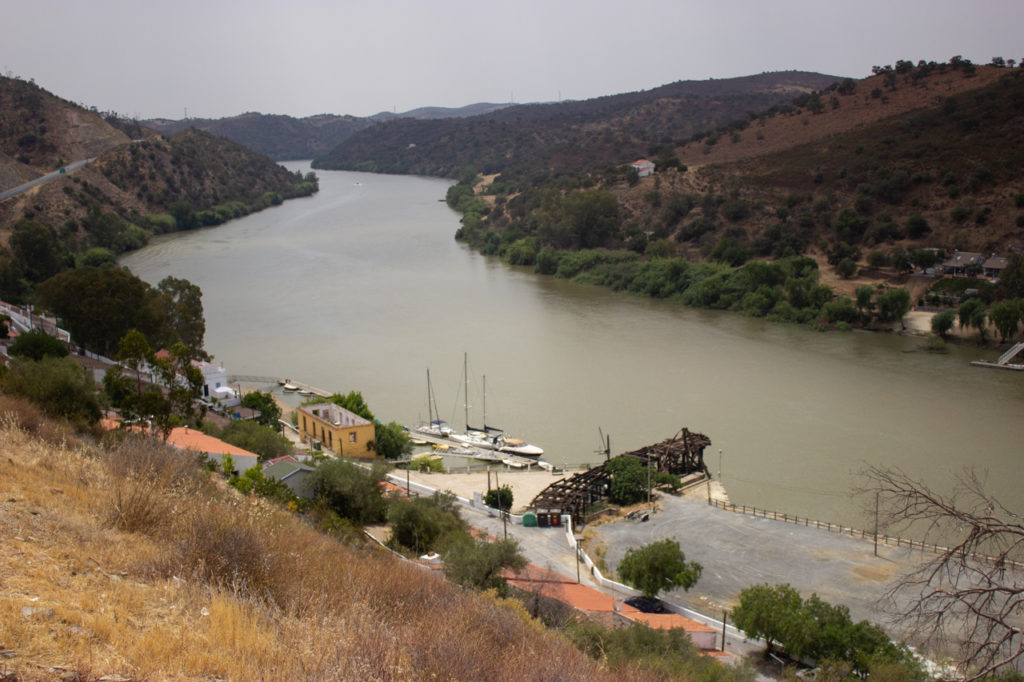The Government will allocate 200 million euros from Portugal's Recovery and Resilience Plan (PRR), financed by the so-called “European bazooka”, for projects to improve water efficiency and in processes of adaptation to drought in the Algarve, including desalination and the transfer of water from the Guadiana to the Odeleite dam.
According to the plan, placed today, February 16, in public consultation, this investment results «from the bases of the Algarve Regional Water Efficiency Plan (PREH)», presented in September last year, and will be implemented under the general coordination of the Portuguese Environment Agency.
The connection between Pomarão and Odeleite and the creation of a desalination plant were, in fact, the most consensual technical solutions, among those contained in a study that was carried out, as part of the preparation of the PREH, as o Sul Informação did it in september.
«Increase the available capacity and resilience of the existing reservoirs/adduction systems in high and reinforce with new sources of water» are the objectives of the measures foreseen in the plan now under public consultation.
This reinforcement involves, for example, the "connection between the water supply systems of the Sotavento/Barlavento Algarvio, reinforcing the inflows to the Odeleite reservoir and optimizing the exploitation of its storage capacity, allowing the exploitation of part of its dead volume" .
It is also foreseen “the reinforcement of the inflows to the Odeleite reservoir, through a catchment in the Guadiana river”.
Another of the points is the promotion of "sea water desalination, through a desalination installation that complements the other measures to reinforce the offer and allows modularity and the possibility of additional increases in water availability, to mitigate future risks" .
Reducing water losses in the urban sector is another measure to be taken, “through the renovation and rehabilitation of degraded or technically deficient infrastructures”.
Added to this is the reduction of water losses and increased efficiency in the agricultural sector, «using the modernization of collective hydro-agricultural developments, focusing on existing areas, with the adoption of more efficient distribution systems, the implementation of remote sensing systems , control and monitoring of consumption”.
«It also includes improving the efficiency of individual irrigation systems, through the installation of more efficient irrigation systems with monitoring and tracking of consumption», reads the Recovery and Resilience Plan.
The issue of promoting the use of Treated Waste Water (ApR) is also highlighted in this document, highlighting the «identification of potential users of this source of non-drinking water, especially in economic activities linked to tourism and agriculture and public spaces».
"For the areas with the greatest potential, the treatment of wastewater treatment plants will be fine-tuned to a compatible level of quality, and lifting, storage and distribution infrastructure will be built in order to allow the replacement of other sources of drinking water or the use of its own sources, in compliance with the legal regime that regulates the production of ApR, as well as its use, in order to promote its correct use and to avoid harmful effects on health and the environment».
Finally, the idea is to 'strengthen the governance of water resources (monitoring, licensing, inspection and awareness), investing in the strengthening and modernization of monitoring stations and the installation of meters with telemetry in the main consumers, complemented by an evaluation of the use of water in irrigation through remote sensing, which will allow regular monitoring of irrigated areas and estimate the volumes captured».
There will also be the «implementation of ecological flows in the Bravura and Funcho-Arade reservoirs».
The Recovery and Resilience Plan highlights how all these measures “are complementary and articulated in order to ensure the necessary resilience to the effects of climate change”.
About 40% of projects aim to increase water efficiency, 34% improve drought adaptation processes, 15% contribute to environmental objectives and 11% to improve articulation (including dissemination of good practices).
This document will be in public consultation until March 1st., foreseeing 36 reinforcements and 77 investments in the digitization, climate and social areas.
In Alentejo, an investment of 171 million is planned for the multi-purpose hydraulic exploitation of Crato, providing for the «creation of a strategic water reserve that will constitute an alternative for public supply and allow the establishment of new irrigated areas, responding in an integrated manner situations of extreme drought and reducing the likelihood of flooding'.
Help us to do the Sul Informação!
Contribute your donation so that we can continue to make your journal!
Click here to support us (Paypal)
Or use our IBAN PT50 0018 0003 38929600020 44



















Comments